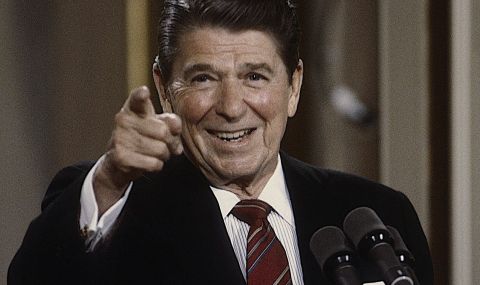On March 30 at 2:25 p.m. local time, only 69 days into his presidency, Ronald Reagan was shot as he was leaving the Washington Hilton Hotel, where he was giving a speech. As he greeted the assembled fans and prepared to enter his armored Cadillac, six rapid shots rang out, fired in just 3 seconds.
However, the few photojournalists and television operators were not startled and immediately began filming, as if they had been waiting for the moment. Thanks to their photos, three bodies are seen sprawled on the sidewalk and a group of federal agents and police officers are pressed against a stone wall of the assassin. White House spokesman James Brady was shot in the right side of the head. Secret Service agent Timothy McCarthy and police officer Thomas Dilihanty were wounded.
The assassin John Hinckley fired a short-barreled Röhm RG-14 .22 cal Revolver. He did not resist and even smiled when detained.
After the shooting, the presidential "Cadillac" quickly left the scene. The security guards still did not know that Reagan was injured, since the bullet had entered under his arm and there was no blood visible. According to the repeatedly practiced procedure, the bodyguards on the move immediately examined the president's body and took him to the nearest Washington clinic, where a team of relatively young surgeons took him in.
It turns out that the bullet ricocheted off the limousine door and flattened (therefore, the lacerations were larger, but its speed had decreased), passed about 3 cm from the heart and lodged in the left lung. The profuse hemorrhage was controlled in a four-hour operation without serious consequences. The president, although almost 70 years old, recovered relatively quickly.
The assassination noticeably changed the president's habits and even affected his character. In the following years, Reagan was afraid to take a single step freely on the streets, stopping his walks in Washington and in the vicinity of his residences.
The investigation found that John Hinckley decided on the assassination attempt to imitate a character from Martin Scorsese's film "Taxi Driver", released in 1976. He chose the president as his target, hoping with this gesture to seduce actress Jodie Foster, who starred in the same film as an underage prostitute, whom he manically liked.
It also turns out that John comes from a very wealthy family. He studied at a university, but dropped out. Attorney Vincent Fuller, who represented Hinckley during his trial and for several years afterward, claims that Hinckley suffers from schizophrenia: he has been diagnosed with narcissistic and schizoid personality disorders and dysthymia, as well as borderline and passive-aggressive features.
John Hinckley is admitted to a Washington psychiatric clinic and the 30-year treatment seems to be yielding results, because he is periodically accustomed to the court and his strict isolation as extremely dangerous is increasingly softened, he is even allowed to go out with his family.
